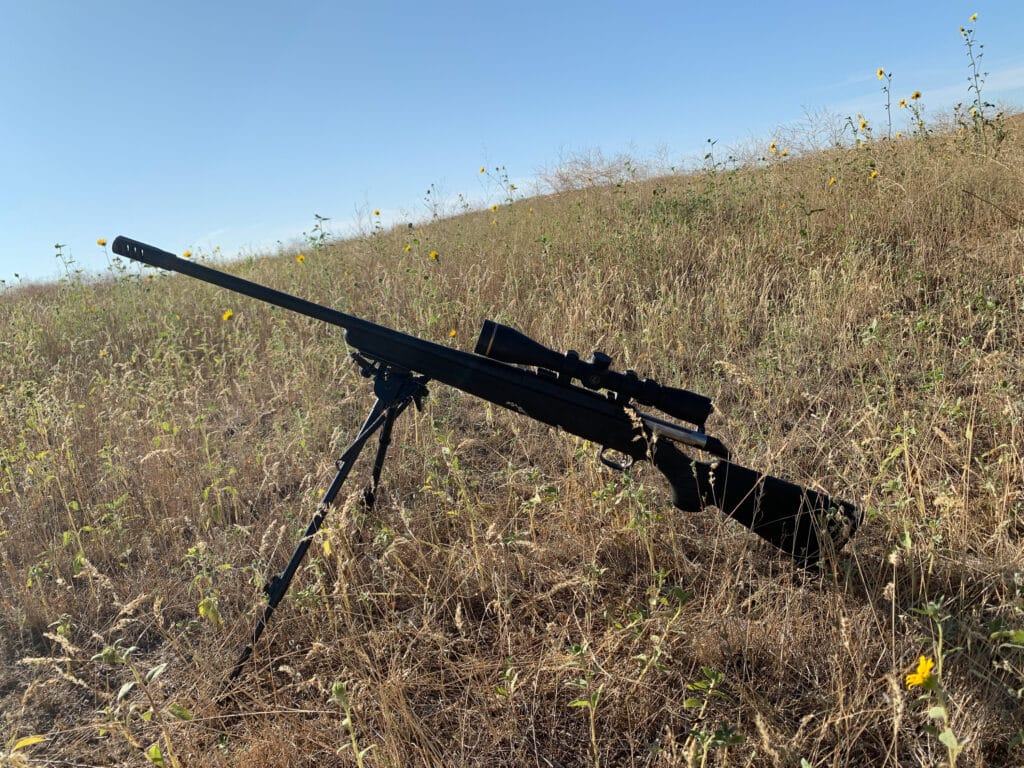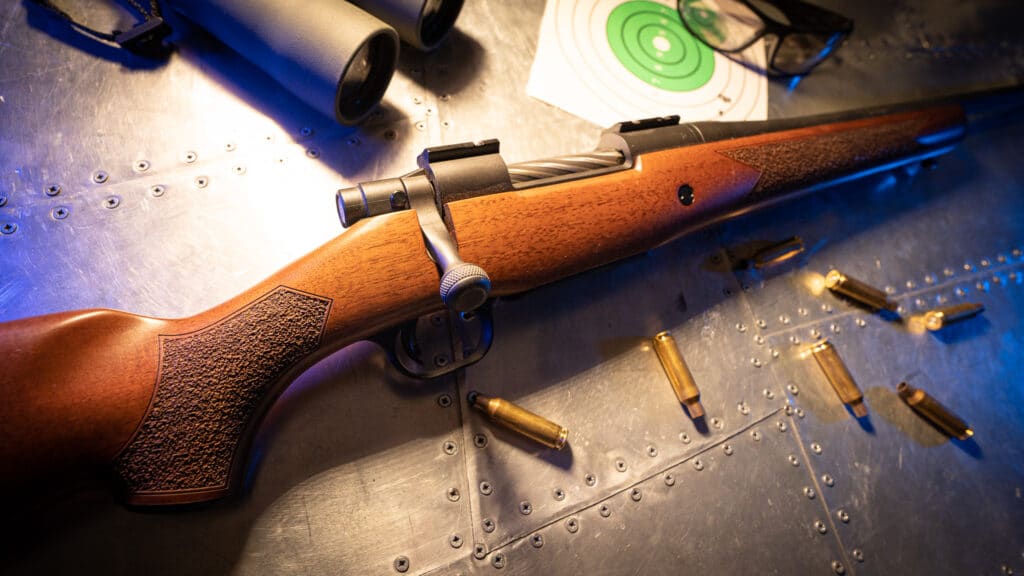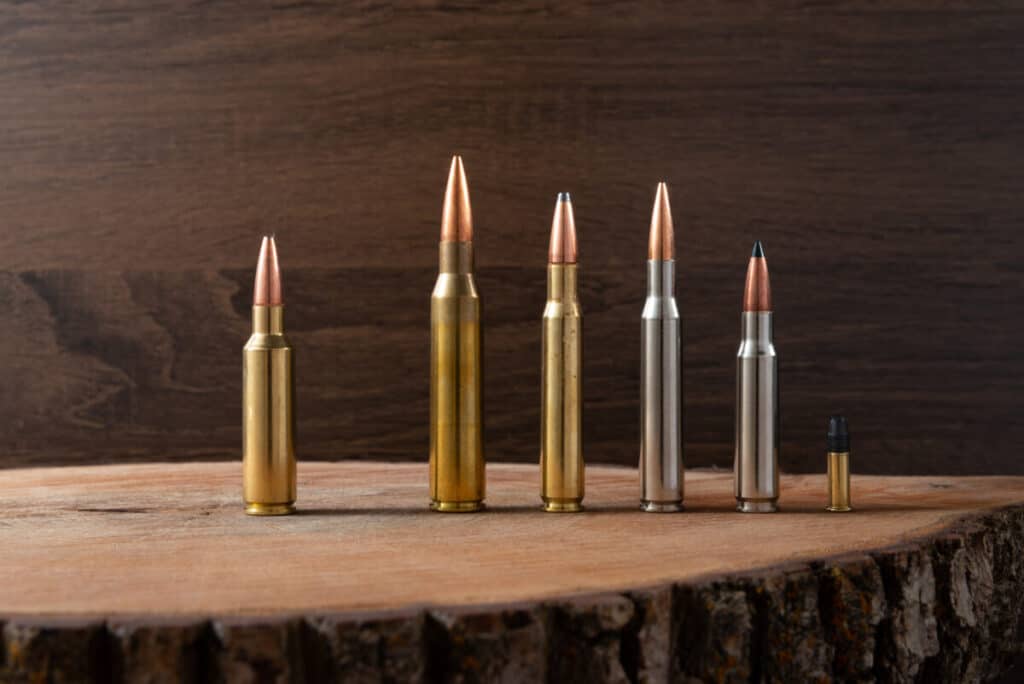Hunting Rifles for Home Defense: Is it a bad idea?

People have a right to be safe and secure inside of their homes. Most states recognize this right with a legal concept known as the Castle Doctrine, in that there is no duty for a homeowner to retreat from a threat.
Many gun owners possess a hunting rifle as their sole firearm, so it is reasonable to wonder if this is a good choice for home defense. They are without question very deadly, but be cautious in this decision, as there are some drawbacks.
In general, hunting rifles are not recommended as a home-defense weapon because they are generally large and thus difficult to maneuver, as well as being slow to cycle between shots. Most hunting rifles also shoot bullets that penetrate much deeper than pistol rounds, and thus could pose a risk to people beyond the target.
Using a hunting rifle for home defense doesn’t have a simple yes or no answer, rather it is a series of considerations. They are usually very powerful, but they may endanger others around you. Keep reading and hopefully, I can help you make a decision one way or the other.
Let’s Talk About Hunting Rifles
Hunting rifles come in many shapes and sizes and can be used for hunting very small game, such as rodents, to large and deadly game such as grizzly bears. The most common rifles used for hunting will be suitable for large game such as deer, feral hogs, and elk.
While rifles more powerful do exist, it is unlikely for an individual to own a rifle chambered in .416 Remington Magnum and not one in a more moderate caliber like .270 Winchester or .243 Remington.
Hunting rifles are made in a variety of actions as well. The most common is a bolt-action rifle, but lever, pump, and semi-automatic hunting rifles are also common. I’ll discuss each of these in this article with the exception of modern sporting rifles. Those are dual-purpose enough to be outside the scope of this article.
Capacity is another thing to consider. Many states have limits on how many cartridges a hunting firearm can hold. This not only affects those states but the whole domestic market as manufacturers don’t want to make multiple versions of a rifle meant for different markets. Most hunting rifles will hold between 3 and 10 rounds.
It is also important to note many rifle cartridges have ammunition that is both well-suited for home defense and ill-suited for home defense. It is important to choose suitable ammunition. To me, a bullet designed to be used on large varmints or deer seems like the best choice. Don’t overlook this aspect.

The Common Choice: Bolt-Action
By far the most common choice for a hunting rifle, the bolt-action, is popular for several reasons. It can be chambered in very mild recoiling cartridges like the .223 Remington and 6.5 Grendel to the common magnum cartridges like 7mm Remington Magnum and .300 Winchester Magnum.
Capacity will usually be between 3-5 rounds, but some bolt action rifles do use detachable magazines with capacities of 10 or more. A 22″ barrel is most common, but anything from 16″ to 30″ is available.
Since the majority of bolt-action rifles made in the last few decades don’t feature iron sights, they are usually paired with a magnified optic. Most traditional bolt-action rifles will not have an option for the easy attachment of a weapon’s light, at least out of the box.
Any bolt-action rifle chambered in .223 Remington or greater will have ample power for home defense. This power through transforms from ample to excessive in most long-action cartridges like the .270 Winchester or 30-06. Magnum cartridges are over-powered in every home defense scenario when another person is the aggressor.
Aiming a long-barreled rifle with a magnified optic can be troublesome at a close distance. For an across-the-room shot, sights are generally ignored and the shot is taken with the muzzle as a guide. This is true for most firearms, not just hunting rifles.
But for a shot that requires some level of aiming, such as at 20-30 yards, the magnified optics can become a hindrance. If you do decide to keep a hunting rifle ready for home defense, always return the optic to its lowest magnification after each hunting or range trip. If you live in a remote location and consider a 100-yard shot as a possibility, the magnified optic starts to become an advantage.
The upside of a bolt-action rifle is the ability to stop a threat very, very quickly with a single well-placed shot. There are a number of downsides to consider though.

Downsides to Using a Bolt-Action Rifle for Home Defense
The first downside of using a hunting rifle for home defense is its excessive range where it is lethal. Rifles meant for hunting, and bolt-action rifles specifically, excel and propelling bullets hundreds of yards downrange with lethal energy.
This range is important for giving a hunter flexibility for shooting at game animals hundreds of yards away but it is well beyond what is necessary for home defense in a civilized society. Any missed shot that doesn’t impact some solid building materials, such as a brick, will continue for hundreds of yards at a great velocity.
Bullets from a full-powered rifle will also have a greater ability to penetrate the interior walls and furniture as well. If you live in an apartment building this type of rifle is a poor choice for defense, period.
Another downside is the large amounts of muzzle blast created by full-powered rifle cartridges. Expect to lose significant hearing and night vision after the first shot. Shooting indoors is significantly louder than shooting outside because the sound bounces around in the enclosed area.
Shooting on a foggy day is an eye-opener to many new shooters because of the atmosphere’s ability to amplify sound. If you can do it safely, I recommend the experience. If you do, remember that shooting indoors is much, much louder.
Some of these problems are mitigated by what cartridge your rifle is chambered in though. Mild cartridges like the .223 Remington and 6.5 Grendel essentially carry the same dangers to hearing as an AR-15 or AK-47 type rifle.
One last disadvantage to consider is the bolt-action rifle is not autoloading. Should you need to shoot a second or third time, you will need to manually cycle the bolt. Bolt-action rifles are slow to cycle compared to pump and lever-action rifles and it’s more difficult when the rifle is shouldered.
This isn’t to say bolt-action rifles are slow with follow-up shots, they were issued to soldiers for decades, but they aren’t fast either. Smooth cycling is also a sacrifice one usually makes when buying a budget rifle.
Bolt-action rifles also tend to have lower capacities compared to most other firearms used for home defense, but nearly all justified shootings involve a low round count.
The Better Choice: Lever-Action Rifles
The lever-action rifle has a number of more suitable options for home defense when compared to bolt-action rifles. They are typically chambered in cartridges with much less range, recoil, and muzzle blast. There are even a number of options available chambered in magnum pistol cartridges.
The biggest asset of the lever-action over the bolt-action rifle is the fast follow-up shots. Lever-action rifles are designed to be cycled in a quick up-and-down motion. While still slower than a semi-automatic rifle, they are a significant improvement over a bolt-action rifle.
Another advantage for lever-action rifles is they are chambered in cartridges that lend themselves better to home defense against human aggressors. The harder-hitting pistol cartridges, such as .357 and .44 Magnum, are essentially ideal choices with the correct ammunition.

The most popular lever-action cartridge of all time, the classic 30-30 Winchester, has more power and range than necessary, but it’s a far cry from being over-powered like the 30-06 or .270 Winchester. With the big-bore lever-action rifles, once again, ammunition choice is critical. Heavy for caliber bullets should be avoided.
Lever-action rifles with a loading gate can even be topped off one round at a time.
Somewhere in Between: Pump-Action Rifles and Semi-Automatics
With the proliferation of AR-10 and AR-15 style rifles, pump-action rifles have taken a serious decline in popularity to the point of almost never being seen in the hands of shooters. Still, they are worth mentioning.
Pump-action rifles offer an interesting combination of a fast follow-up shot with the downside of having more power and range than is necessary and generally being low capacity. Because of the popularity of spitzer bullets, these rifles are magazine-fed and not tube-fed like a pump-action shotgun.
Semi-automatic hunting rifles that fall outside of the AR-10, AR-15, and AK-47 pattern of rifles tend to carry the same precautions and pump-action rifles, but with faster cycling.
Opportunity Cost
Opportunity cost is an economic idea that deals with looking at time and money invested into something versus its alternatives. I think this is important to look at because for many, using a hunting rifle for home defense is a budgetary choice.
While using a hunting rifle for home defense saves money over purchasing another firearm, it is important to remember most other firearms have access to cheaper practice ammunition. Shotguns, with their natural pointing abilities, tend to be quicker to learn as well, reducing ammunition consumed.
Most full-power rifle ammunition costs around a dollar a shot. Between sight in and hunting season, many hunters shoot less than a box of ammunition a year. People who fall into this category are likely not practicing room distance shooting at all.
If you are thinking about leaving your hunting rifle loaded for home defense, but shy away from practice due to ammunition costs, it’s time for some introspection. Conversely, if you are willing to practice close-range shooting on a regular basis, it won’t be long before you’ve spent enough money on ammunition to buy a pump-action shotgun.
Putting it all into Practice
With that said, I took my Savage 110 chambered in .308 Winchester out shooting with me to run some drills. It’s a bolt-action rifle with a 4-round detachable magazine. Recoil is very similar to a standard power 2 3/4″ shell from a 12 gauge shotgun. I have a 2.5-15x44mm optic on top of it.
The two drills I focused on were room distance shooting at about 5-8 yards and a “long-distance” drill with targets ranging from 25 to 40 yards away. Over the course of practicing here are some of the lessons I learned:
- There’s no such thing as a free lunch. Even though I shoot pistols weekly and a shotgun or an AR-15 rifle regularly, the mechanics of running a bolt-action rifle are different enough to force me to slow down considerably.
- Once targets get close enough where my optic is more of a hinderance than a help, aiming down the side of the barrel or over it became significantly less accurate than a bead sight on a shotgun.
- The Accu-Trigger on my Savage locks up with any sort of sideways pressure and requires manipulation of the bolt to unlock it. The trigger is fine for timely shot on a game animal or steel target, but quite unsuitable for home defense. This wouldn’t have been an issue had I selected my Howa 1500.
- Cycling the bolt while keeping the stock on my shoulder was not a smooth process about half of the time.
- Moving the stock between my arm and chest to bring the rifle closer to my center meant the follow up shot was significantly delayed due to not being able to easily cycle the bolt.
- I don’t own a second magazine for my rifle and I think I’m in the majority in that regard. After 5 shots, any reloads would need to be manually fed into the receiver. But even with a spare magazine, the Savage 110 isn’t designed for quick magazine swaps.
If you read that list and thought some of those struggles can be overcome with training, you are absolutely correct. I probably won’t iron out these training issues because I don’t use a hunting rifle for home defense, but it is worthwhile to point out they exist for even an experienced shooter.
As I stated before, I think the idea of using a hunting rifle for home defense is a choice rooted in trying to save money. I struggle to believe many people entertaining this idea are going to spend sufficiently on ammunition to become proficient.

Conclusion
Depending on the rifle and cartridge, using your hunting rifle for home defense can range from a good idea to downright dangerous to innocent people. It must be stated that the most common hunting rifles, the budget bolt-action variants, tend to be the least suitable.
So should you use your hunting rifle for this purpose? That’s a decision that only you can make. But remember, if you pull the trigger, you are accountable for the bullet. This is why I have a hard time recommending them for home defense outside of lever-actions.
It would be irresponsible for me to conclude this article without reminding you the pump-action shotgun is a devastating close-range weapon without many of the drawbacks associated with full-power rifles. They are also affordable, the ammunition is affordable, and they are easy to become proficient with.
If you are trying to find the correct answer for your situation, hopefully, I have helped in some way.
